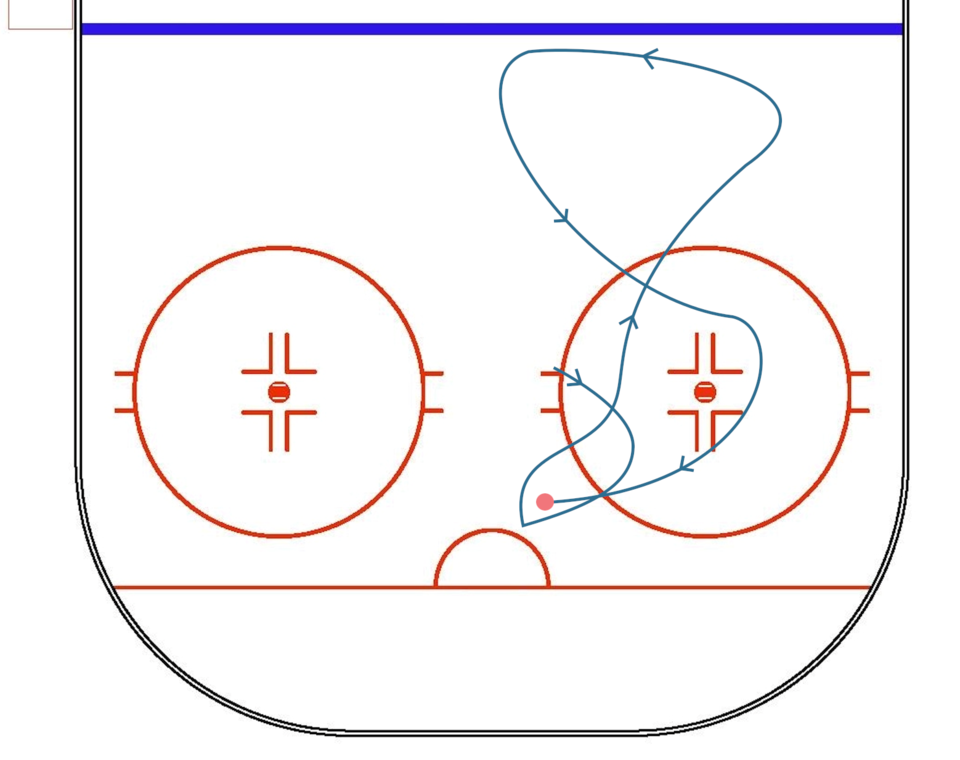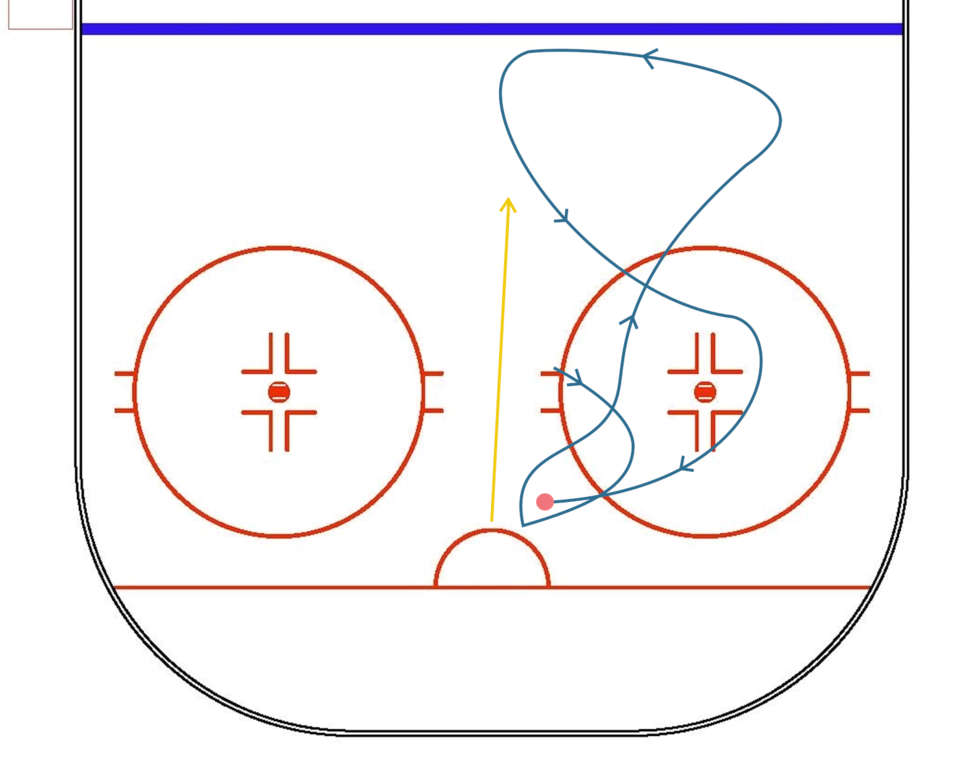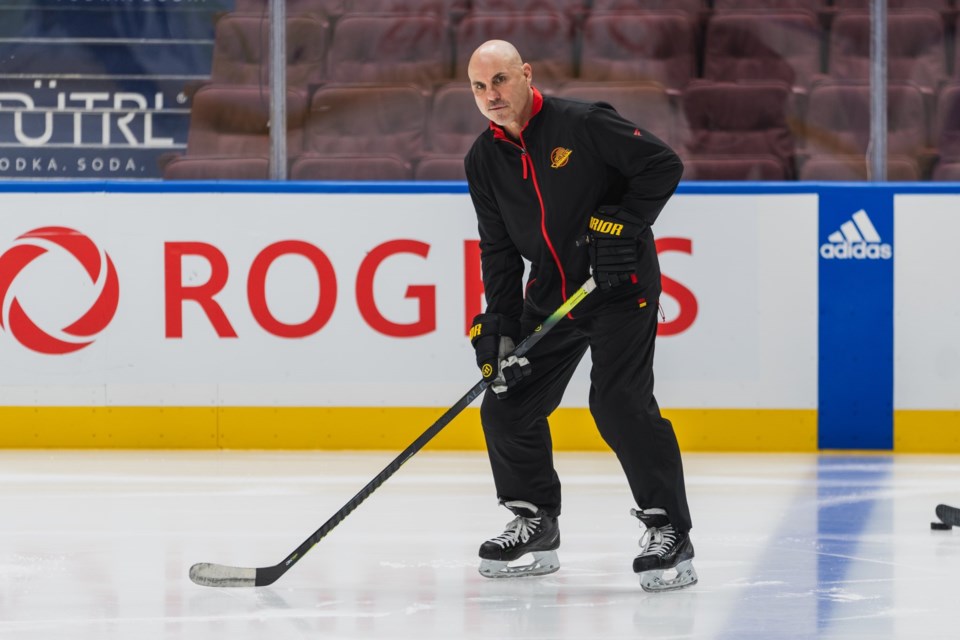A major contributor to the Vancouver Canucks’ early success this season has been their power play.
The Canucks are currently second in the league in power play goals with 15, with a fourth-ranked power play percentage of 32.6%. For perspective, the Edmonton Oilers had the best power play in NHL history last season, converting on 32.4% of their power plays.
It’s a stunning statistic that speaks to a group effort from not just the players on the ice but the coaching staff, as it’s not just one coach taking the reins.
“When Sergei’s in town, it’s me and Sergei, and I’ve got the twins handling the second unit,” said head coach Rick Tocchet. “It’s a committee.”
But the subtext of Tocchet agreeing that the power play is coached by committee is that the first power play unit is primarily his responsibility. Daniel and Henrik Sedin have been working with the second power play unit, not the first. And, as much as Sergei Gonchar is helping coach the power play when he’s in town, Gonchar is not always in town.
Running the power play is typically something delegated to an assistant coach, but Tocchet is instead taking a hands-on approach. It’s something he has experience with, as he ran the power play with the Pittsburgh Penguins when he was an assistant there.
Of course, Tocchet also had plenty of experience playing on the power play in his career, including a season with the Penguins where he had 20 power play goals.
The players themselves have taken an active role as well, as the team’s power play practices frequently feature more of a back-and-forth with Tocchet and the players rather than a top-down approach.
“The [players] have got some good ideas,” said Tocchet. “I love the meeting when I meet with those guys, they have some good points.”
So, what’s driving the Canucks’ success on the power play? It’s movement and recoveries.
Movement with a purpose on the power play
“I love movement and I’m seeing that,” said Tocchet, when I asked about the power play creating open looks. That movement has been evident right from the start of the season and is a major difference from their — still successful — power play last season, which was much more static and focused on a few repetitive plays to create chances.
This season’s Canucks are a lot more free-flowing in their approach to the power play, but still intentional with how they move off the puck to open up seams in the penalty kill and create open ice for scoring chances.
I’m going to look at a power play against the Dallas Stars where the Canucks were not successful in scoring because it provides some great examples of what has made the Canucks successful overall.
Let’s start right off the offensive zone faceoff won by J.T. Miller.
Quinn Hughes gets the puck at the point and deals with the Stars’ aggressive penalty killing with a pass to Elias Pettersson, whose return pass nearly gets picked off. Pettersson immediately retreats into the neutral zone just in case of a shorthanded rush, but Hughes picks up the puck on the far boards and moves down low on the left side.
He moves the puck to Brock Boeser, who has rotated to the point, then gets the puck back as he returns to the point before returning the puck back to Boeser, who is now at the left faceoff circle and has a free lane to the top of the crease, where he forces a great save by Jake Oettinger.
Let’s focus for a moment on the movement of Boeser in particular, who roams the most in this one clip.

Boeser starts on the inside hashmarks for the faceoff, goes to the front of the net off the faceoff win to provide a screen, then rotates all the way to the point. He drags the puck to the middle of the ice before passing back to Hughes, then loops in behind his defender to the faceoff circle before eventually driving to the net.
There’s nothing static here and no one position for Boeser to play on the first unit. He’s not pigeonholed into being the down-low, net-front presence, or the bumper in the middle of the ice, or the half-boards, or the point.
Instead, in this one brief clip, he plays all of those positions and it leads to him being wide open for a grade-A scoring chance.
This has been typical of the Canucks power play this season, as players are not sticking to one position. Pettersson has frequently played the point with Hughes moving to the half-boards. Kuzmenko, Boeser, and Miller have all spent time in the bumper, on the half-boards, and in front of the net.
Other players are moving in this clip to create openings but the most important piece of movement comes from Miller.

It’s a simple play but it’s very effective. Miller moves to the front of the net after winning the faceoff and stays there to provide a screen in case Boeser takes a shot from the point. As soon as Boeser passes off to Hughes and rotates to the left side of the ice (right in the diagram), Miller pushes out into the high slot and drags a penalty killer with him.
That threat of Miller being in the bumper for a potential pass from Boeser, combined with Boeser getting lost in the penalty killing scheme with his movement, is what opens up that massive lane to the net.
Retrievals are vital on the power play
I remember talking to Alex Edler about power play strategies several years ago when he was still with the Canucks. He emphasized to me that the most important element of the power play isn’t creating chances — it’s getting the puck back after a chance.
The worst thing that can happen for a power play is if it’s one-and-done: a single shot or chance, then the puck gets cleared.
It’s a lot of work gaining the offensive zone, getting set up in your power play formation, and running a play to create a chance. When all that work is squandered on a single shot attempt, it can be disheartening. It’s vital for the power play to use the man advantage to win races to loose pucks and rebounds or to win battles when the puck is contested.
Puck retrievals are what lead to longer possessions in the offensive zone, tire out the opposing penalty kill, and lead to more and better chances for the power play.
“Retrievals…on the power play are so big,” said Tocchet. “It just extends O-zone time. Then the other team’s tired, you keep them on the ice. We’ve been working on that in practice — the players have bought in and they’re doing a great job with it.”
It also provides a boost to the rest of the team, even when the power play isn’t successful
“You don’t always have to score on the power play when you have possession time,” said Tocchet. “You can see on the bench, it lifts your next shift, right? The guys find juice when we have good power plays.”
Right after Boeser’s chance against the Stars provides an example of retrieving the puck to extend possession.
The recovery off of Boeser’s chance is easy enough: the puck spills to the boards and Hughes is able to pick it up without difficulty. But after that, the Canucks look to create a chance for Boeser in the bumper that the Stars anticipate and break up.
The retrieval starts with Hughes winning a race for the loose puck and swiping the puck down the boards. That’s where Andrei Kuzmenko establishes good body position to protect the puck and prevent a Stars penalty killer from getting to it, then Boeser pounces on the loose puck and smartly swings it to open space on the wing for Miller, who is able to get possession and let the Canucks set up again with a pass to Pettersson down low.
It seems simple, but it involves everyone on the ice doing their part and being in the right place at the right time for the power play to maintain possession of the puck and keep the penalty kill hemmed in.
Here’s another example from later in the same power play.
Pettersson and Miller execute well to give Boeser a chance from the slot that Oettinger stops and the rebound is cleared to the end boards. The Stars penalty killer has position, but Miller ties him up and pins him to the boards, preventing any attempt at a clear and Boeser is the next man in to grab the loose puck.
Boeser chips the puck behind the net to Kuzmenko, who takes the puck off his skates and sends a curling shot to the point, taking pace off the puck to allow Hughes time to come across and keep the puck in.
It’s a combination of a great battle by Miller and smart plays by Boeser and Kuzmenko to recover the puck and keep the pressure on.
Peppering the net on the power play
The Canucks kept the puck in the Stars’ end of the ice for 1:45 straight — nearly the entire two minutes of the power play. The movement created chances and the puck retrievals allowed them to create more. Then, when they had the penalty kill on the ropes, they kept hammering away.
There’s less movement here than at the beginning of the power play but it’s not entirely static.
First, Boeser rotates to the high slot for a wide-open one-timer with Miller screening. Kuzmenko recovers the rebound and protects the puck along the boards before moving it to Miller down low, who keeps the puck going to Pettersson.
That leads to another chance, similar to an earlier chance: a down-low pass to Miller, who relays to Boeser, who has rotated back into the slot.
Miller retrieves the rebound again, which leads to a Pettersson one-timer chance that Oettinger gets a piece of, and this time the Stars penalty killers are able to finally clear the puck.
Even then, it’s heavily contested. Boeser throws a hard check in the corner, Miller, after getting tangled up with Oettinger in front of the net, throws a hit himself, and Pettersson nearly keeps the puck in along the boards.
While the power play didn’t score here, it created chance after chance, while illustrating what has allowed the power play to score all season: movement and retrievals.




